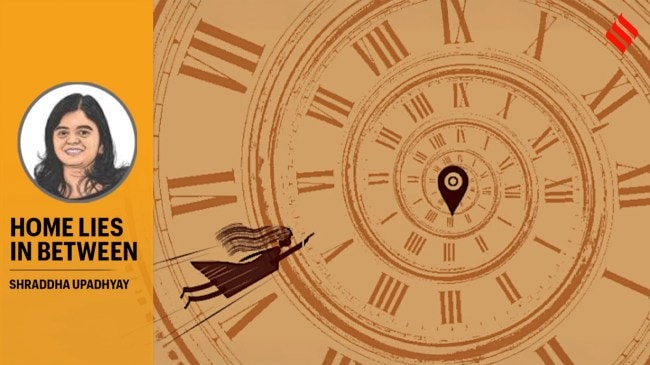Opinion Gwalior felt distant even when I lived there
Every visit back home chips away at the ambition of coming back. Because the current location and destination are both moving points.
 Gwalior was replete with monuments not mentioned in our history textbooks.
Gwalior was replete with monuments not mentioned in our history textbooks. There is a “notable people” section on Wikipedia pages about cities. As a teenager, I was obsessed with notable people from Gwalior: Tansen, Nida Fazli, Kartik Aaryan. Which Gwalior did they inhabit? In my city, fame meant clearing exams and earning merit, your name published in the city edition of national newspapers. How did the same city produce musicians and poets and actors? Fazli had returned to Gwalior for an event and his interview took the entire back page of the weekend city edition of the leading Hindi newspaper. I ate up the interview, basking in the light sluicing the shimmery paper. When asked why he left Gwalior for Mumbai, he didn’t mention riots or lack of opportunities. He romantically recited, “Apni marzi se kahaan apne safar ke hum hain/ Rukh hawaon ka jidhar ka udhar ke hum hain” (My journey is not determined by my choice, I go where the direction of winds take me). I reminisced about this ghazal for years (often in Jagjit Singh’s voice) and sobbed in a foreign city.
But Gwalior felt distant even when I lived there. It was replete with monuments not mentioned in our history textbooks. It was brimming with myriad forms of culture — moving bookstores, Tansen Sangeet Samaroh, concerts and plays, and the Gwalior Vyapar Mela (Many metropolitan friends ask me: Does Gwalior have a mall?). Yet, it was merely a prelude for a different end. Our engagement with art and literature remained focused on facilitating the single-minded pursuit of escaping. Chasing an unknown object of undefined desire. Like Vivian Gornick writes in The Odd Woman and the City, “From earliest adolescence, I knew there was a center-of-the-world and that I was far from it.” I wanted to seize the centre; little did I know, the “centre does not hold”.
I worked hard to reach the centre. I coaxed merit to feature in my stars so that I could get away from my restricted girlhood in Gwalior. The anonymity provided by the big city was freeing though it also minimised my existence to a note on the margin of a book. But it allowed me to live on a whim. In the metropolitan, I participated in political rallies with strangers, gave speeches in protests and fearlessly featured in news pieces, slept in monuments, went alone to watch films at midnight, chatted away with men on long dates, nurtured the Sun in one house’s balcony and the moon on another home’s terrace. This life seems unthinkable in Gwalior. But my shadow lives back home, imagining many multiverses: What if I did not escape? What if I could live the same life at home?
I remain curious in an anthropological sense about the city. On some days, I pull Gwalior’s map on my laptop, so much wider than the map I imagine when I think of the city. I wonder who lives on these GIS points. In which area would children feel safe on the roads? Once in the big city, I learnt where you could buy straw baskets. I wondered where one could find straw baskets in my city. During heritage walks in other cities, I have stopped and wondered about the lanes of my city. My experiences remained limited, not inclusive of sunrises and night skies. A school friend told me that an acquaintance asked her if she ever saw the Gwalior fort at 4 am. We were shocked at the question, “How would we have the permission and what about safety?” Another friend lamented, “We don’t even know a good chai ki tapri in this city.” My friendships from my home city were unintentionally determined by the warped criteria of the exam they cleared — central, state or competitive private.
In the big city, I longed for a sense of belonging. I noted the similarities and differences of language with diligence. I went to auditoriums to witness the theatre and music of my city. An easy familiarity develops between migrants in the metropolitan. Whenever I hear my language on anyone’s tongue in autos, cabs, construction sites, beauty salons, I ask them where they are from and make sure that they know that I’m not from the big city. I want to belong to this homelessness at least.
How many years does it take to belong somewhere? I’m sure someone has worked it out. There must be a number to be added to your age and then divided by another one. The illusion of merit carried me here, merit’s more meritorious cousin marriage has made my migration legitimate. But I still feel suspended in the interim. Inauthentic in this city and inexperienced in the one I come from. I know it’s my job to honour my home in my heart and wear the heart in my city-slippers in the metropolitan. I can humour myself by believing that home is still a possibility, one I can put together, a road not taken — or I can pride myself on this escape: I have made it! I have buffets to choose from, instead of bhandaras where you have a messy mash of only what you are served.
Every visit back home chips away at the ambition of coming back. Because the current location and destination are both moving points. Fazli says in the documentary Ye Kahan Aa Gaye Hum, “Shahar jaane waale ka kuch din rasta dekhta hai aur jaane waala jab waapas nahi laut ta to shehar khud apni jagah se door chala jaata hai. Aur jab wo lautne waala waapas aata hai to itni der ho chuki hoti hai ki uska shehar apne hi shehar mein nahi milta.” (A place waits for the person who leaves only for a few days, but when the person doesn’t come back, then the town itself goes off to some other place, and when the person comes back, by then it is so late that his city cannot be found in his town).
Upadhyay is a writer and researcher based in Delhi




